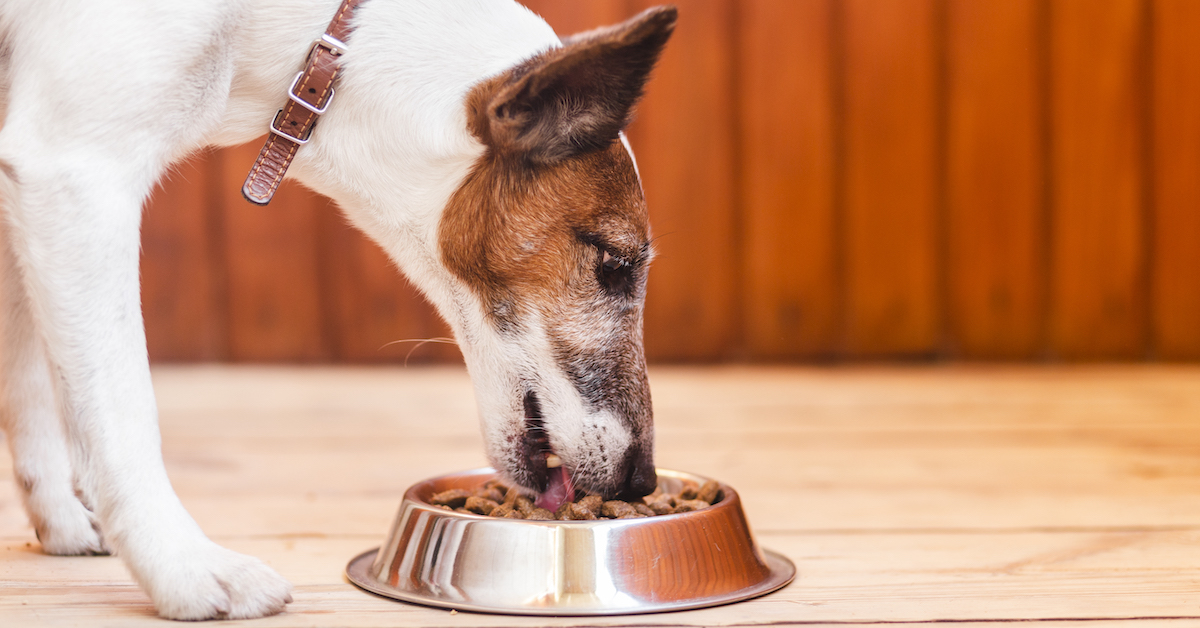Do’s and Don’ts of Homemade Dog Food
The best homemade dog foods are nutritionally well balanced and contain the right combination of ingredients that are essential to your dog’s health.

Many pet owners have started to adopt a lifestyle that includes a diet of whole foods instead of processed foods. Some are bringing their dogs along for the journey. According to data collected by OnePoll, 55 percent of pet owners struggle to find a balanced dog food option in stores. Homemade dog food is an alternative to commercial diets that are often chock full of chemicals and preservatives. They can also be custom-made to meet your pet’s unique nutritional needs.
Dogs Need a Well-Balanced Diet
While feeding your dog homemade meals can be advantageous to his health, not all homemade dog food recipes are created equal. A recent study published in the Journal of the American Veterinary Medical Association found that 95 percent of 200 homemade dog food recipes examined for nutritional accuracy were lacking the necessary levels of an essential nutrient. In addition, 83 percent of these recipes were deficient in multiple nutrients.
Before diving into the world of homemade dog food, it’s important to perform ample research to ensure that your pet is receiving a well-balanced diet. Consider the following do’s and don’ts of homemade dog foods when preparing meals for your pet.
Do’s of Homemade Dog Food
1. Do Choose a Recipe from a Trusted Source
When you’re new to homemade dog food, it’s common to choose an established recipe from a popular online source or cookbook. This can provide a good foundation for a diet that can then be customized to fit your dog’s individual nutritional needs. However, not all recipes can be trusted. Ultimately, it’s usually best to avoid generic recipes. Consider consulting with a board-certified veterinary nutritionist instead.
2. Do Feed Your Dog Whole Foods
The biggest advantage of switching to homemade dog food is to eliminate the processed ingredients found in most commercial kibble and wet foods. When preparing meals for your pet, always use whole, unprocessed ingredients.
3. Do Include Proteins, Carbs & Veggies
Ingredients used in homemade dog food should be fresh and free of unnecessary additives. To meet protein requirements, consider options like beef, chicken, turkey, lamb, fish, beans, and eggs. For carbohydrates, choices include cooked brown rice, sweet or white potatoes, yams, or oatmeal. Safe vegetables for dogs include green beans, broccoli, carrots, spinach, pumpkin, zucchini, cauliflower, and celery.
4. Do Choose a Recipe with Precise Instructions
When comparing homemade dog food recipes, you’ll find that some recipes are very basic. For example, a recipe may call for simply 1 cup of chicken. Instead, you want a recipe that provides more detail, such as 1 cup of boneless, skinless chicken thighs that have been roasted with fat drained.
5. Do Establish a Balanced Diet
Did you know that the average dog requires 40 essential nutrients to maintain good health? Each nutrient plays a key role in the body and without them, the body is not able to function optimally. Dogs that are missing key nutrients can suffer from malnutrition, obesity, or other health conditions. In severe cases, nutritional deficiencies can be fatal.
Don’ts of Homemade Dog Food
1. Don’t Use Unsafe or Unhealthy Ingredients
Many foods that are perfectly safe for humans are unhealthy or even toxic to dogs. For example, ingredients like chocolate, grapes, avocado, xylitol, onions, raisins, garlic, and macadamia nuts should never be fed to dogs. This list is not exhaustive so be sure to always research ingredients before adding any to your dog’s diet.
2. Don’t Substitute Ingredients
When you build a recipe that includes the proper amounts of each ingredient to meet your pet’s nutritional requirements, don’t stray from what works. Substituting ingredients without first checking with a pet nutritionist can alter the overall nutritional balance or your dog’s pet food.
3. Don’t Feed Your Dog Too Many Carbs
While carbohydrates are not necessarily bad for dogs in reasonable amounts, too many can be harmful to your pet’s health. Eating a diet high in carbs puts excess pressure on your dog’s digestive system, potentially leading to problems like obesity, diabetes, and even cancer.
4. Don’t Use Processed Ingredients in Meals
Some pet owners make the mistake of including processed foods in their homemade dog food meals. Processed foods often contain added fats, sugars, preservatives, sodium, and other unhealthy ingredients. It’s best to stick with single-ingredient foods, such as unsalted eggs, unsalted vegetables, chunks of fresh fruit, or a spoonful of natural salt-free peanut butter.
5. Don’t Feed Your Dog a Vegetarian Diet
According to the American Kennel Club, it is possible for dogs to thrive without meat if fed a properly balanced vegetarian diet. However, this is a controversial subject. Dogs are omnivores, meaning they eat both plant and meat products. Meat is considered a fundamental component of a dog’s diet because raw muscle meats deliver high-quality and easily digestible proteins.
The Best Homemade Dog Food for Your Pet
Making the decision to feed your pet homemade dog food can be beneficial to your pet’s long-term health. However, it’s important to approach a change in diet in the right way. Start by speaking with your vet or a board-certified veterinary nutritionist to create a balanced diet that includes everything your dog needs to maintain optimal health.
Ready to start saving money on pet wellness care?
Then take a look at Mint Wellness, the pet wellness plan that provides fast reimbursement on routine pet care. Save on vaccinations, wellness exams, preventatives, dental, and more!
Learn More


